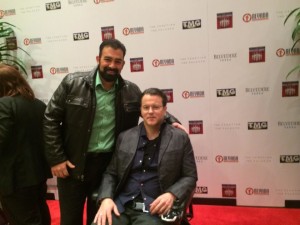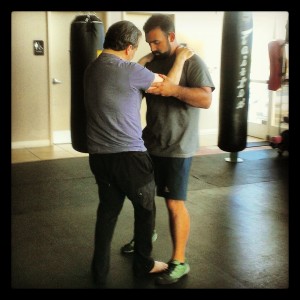The Vestibular System
By Jennifer Davis
What is that?!
This is your vestibular system. Still confused? This very small but extremely important system supports us in everything that we do. It basically keeps us upright. Let me break it down for you.
Where is it located?
The vestibular organs are embedded in bone deep inside the skull.

Image from www .humanneurophysiology.com
Anatomy of the Vestibular System
- Semi-Circular canals (Horizontal, Superior, Posterior)
- The otolith organs (Utricle, Saccule)
- The vestibulocochlear nerve
Its Job
1. To let us know which way is up and
2. To let us know which way we are going
So we know the vestibular system exists to tell us where we are in space. It tells us which way we are going. It
helps us keep our balance and communicates with our postural muscles so they know what to do whether that means to relax or to tense up.
The vestibular system is so important that it is the first system to develop for a baby when it is still in the womb.
Semi-Circular Canals
You have three of these canals as a part of each inner ear. Each canal has a name based on its position in relationship to the other two canals:
1. Horizontal
2. Superior/Anterior
3. Posterior
These canals are oriented at 90° to one another. As a result, they can signal head movement in any plane or combinations of planes.
These Canals have an important job
1. They Sense Head Motion and how fast the head is moving
2. Enable the VOR (Vestibulo-Ocular Reflex)
(if you are a client at the fit life fusion gym you are familiar with us having you do drills that involve gaze stabilization. We are checking your VOR.)
Did you know that the function of your eyes is closely connected to the function of your inner ear and vice versa? So poor visual skills or function can be damaging to inner ear function while inner ear injury or poor skills can be damaging to your eyes.
3. Each canal is formed by bone and filled with a thick gel something like Jell-O called endolymph. At the bottom of each canal, because they form a loop, there is an bulb called the ampulla. Sitting inside the ampulla is a sail shaped structure called the cupula. Attached to the bottom of the cupula is a nerve. When the head moves, this causes the fluid in the ear to bend the sail in one direction or the other. Depending on which direction the sail bends, the nerve either fires with greater or lesser frequency.
No single canal is designed to work alone. They all have partners on the opposite side of the head, and they work in what is called a PUSH/PULL arrangement.
- Horizontal Canals: when we turn our head from Left to Right.
- Left Anterior and Right Posterior Canals: When we move our head down and to the left diagonally.
- Right Anterior and Left Posterior Canals: When we move our head down and to the right diagonally.So this is what happens when we rotate our heads.
- If you turn your head to the right, the fluid in your RIGHT HORIZONTAL CANAL bends the sail (cupula) in a direction that INCREASES the firing rate in the RIGHT vestibulocochlear nerve.
- At the same time, the fluid in your LEFT HORIZONTAL CANAL bends its sail in a direction that DECREASES the firing rate in the LEFT vestibulocochlear nerve.
- Your brain INTERPRETS this change in signaling from each ear as, “I just turned my head right.”
- Your brain will ALSO COMPARE this vestibular input with input from the visual and proprioceptive systems to make sure that all three are saying the same thing.So why is this information important for you? Let’s say you have had small injury (even if was extremely small) to your right inner ear. The injury causes the firing rate to be CONSTANTLY DECREASED. What this would mean over time is that the brain would be getting mixed signals and your brain now is viewing a natural movement that should be easy to do as a threat. As a trainer I will see decreased range of motion, lack of strength, issue in watching your gate, and very common enough you might be feeling pain somewhere.What if you don’t notice some of the symptoms mentioned above… Have you ever dealt with Vertigo, Motion Sickness, or maybe you notice you like to walk on your tippy toes a lot. These are some of the signs of a vestibular issue. In my next blog I will be doing a video showing certain drills that we like to use at the #FitLife Fusion gym that will fix vestibular issues. I hope this Blog was educational and interesting for you, please feel free to e-mail me with any comments or questions you may have about this blog.
Jennifer’s E-mail: jennifer@fitlifefusion.com

